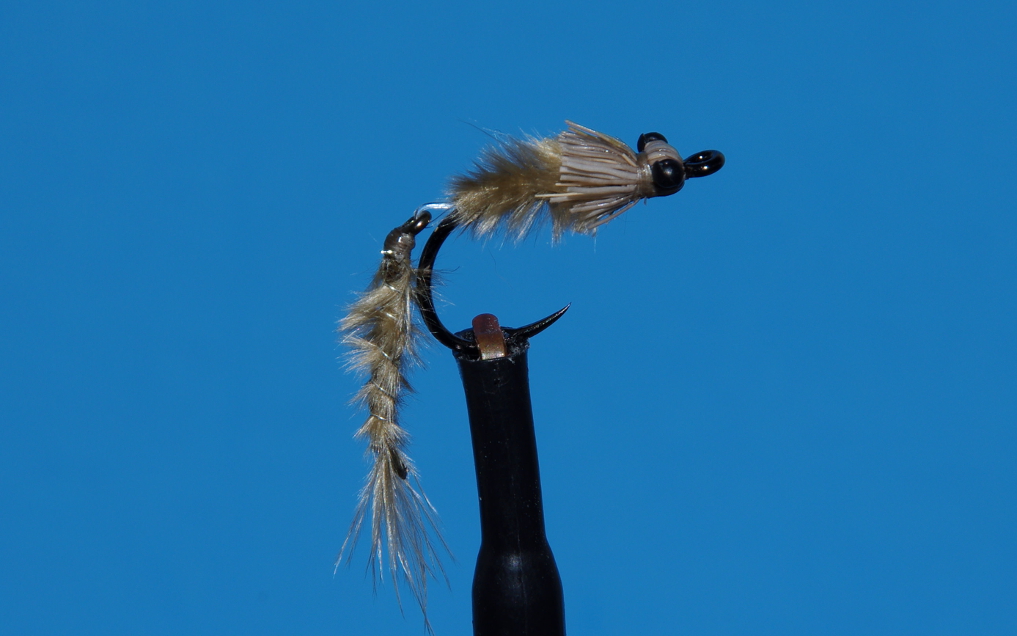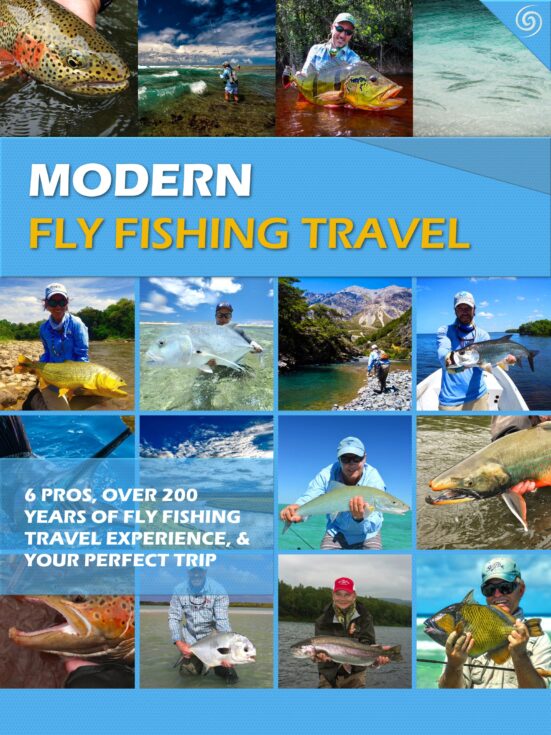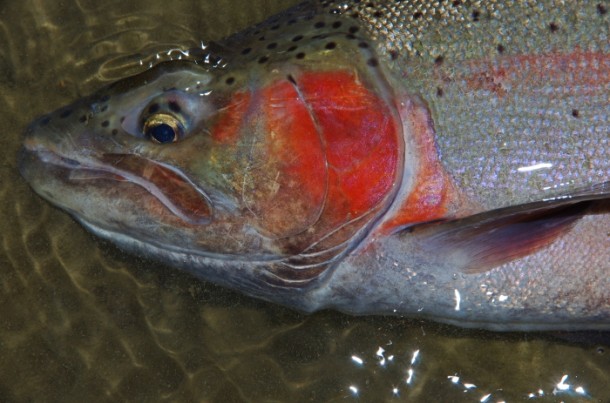Fishing damselfly patterns is one of the most fun ways to fly fish stillwaters. I personally love to fly fish damselflies shallow when I can cast in between pockets or channels of weeds. The fish explode on these little, methodical swimmers, but one thing is certain—damselflies have a characteristic back and forth swimming action. Take a look at most of your flies in the water. Even with lifelike materials like marabou and Arctic fox, it becomes clear that and articulated damselfly pattern is your best bet at emulating the triggering movement of the natural.
The Ruffed Damsel is an articulated damselfly pattern that catches anything that eats damselfly nymphs. It has an action that is as close to the natural as any pattern I’ve fished. When designing the pattern, I wanted to focus on three main triggers. These are movement, size, and profile. It’s easy to get the right size of a fly in most cases. Just get an approximate measurement of a natural nymph and type the fly to this size. Of course, there are different sized damsels, but the ruffed damsel is tied with what I would refer to as normal-sized damselflies. Next, the profile is critical. Damselfly nymphs are skinny and mostly tail. They have bulk towards the thorax and usually tuck their legs in when they swim. With damselflies, less is more. The movement that you gain from an articulated damselfly is what allows this pattern to move like a natural. This is not the only reason that the fly does so well. The ruffed part of the Ruffed Damsel is deer hair. This doubles over and does three things: allows it to stay up a bit in the water column, slow the head down a little during the swinging action, and push a bit of water with the bulkier head. There are other patterns but this articulated pattern does what I try to do with all of my patterns…it totally simplifies fly selection. It has a purpose and if fulfills that purpose really well. Tie it in whatever colors you like but light olive/tan-colored marabou works the best for me, followed by olive.
- Hooks: Any standard dry fly/nymph hook #10 (tail); Gamakatsu C14, Owner Mosquito #6
- Tail: Marabou (olive, olive gray/gray olive, tan)
- Wire: Fine silver wire
- Articulation Connection: 1X fluorocarbon, FireLine, etc.
- Body and Thorax: Marabou (olive, olive gray, tan)
- Hair: Coastal deer, or fine mule deer (olive, natural etc.)
- Eyes: Mini mono eyes
- Lacquer: Zap-a-gap (brushable)




I’m having trouble with wrapping the Marabou for your articulated damsel fly pattern. I can’t get long enough Webby Marabou feathers. Can you recommend the best Marabou to purchase and the technique for preparing the feathers. I’ve purchased nature spirit fish Hunter Marabou great Olive. I can’t get long at Marabou strands to wrap it effectively.
Thanks
Steve
Hey Steven,
I’ve never really had a problem with that, but if you were tying a really large one, I could see that.
If you have to, use multiple pieces as you wrap up the hook.
Also, make sure that you’re not using woolly-bugger marabou, which is shorter and somewhat softer, with more action.
Normally, you just want to find “strung marabou.”
I use Hareline a lot, and they also have “extra select” strung marabou.
When you wrap, make sure that the tips are even, and I would pull from the side of the marabou feather.
Hope that helps!
Justin